When it comes to pointy-end travel in the United States, it pays to do your research. For one thing, most flights up front do not include any airport lounge access by default. That’s true even if your flight is sold as ‘First Class’, on carriers like American Airlines and others. You’re probably scratching your head and wondering, huh? Let’s explain.
In the US, ‘First Class’ often describes the cabin forward of Economy on domestic flights. In almost all cases, there’s no Business Class cabin on the same plane – just First Class and Economy. It gets even more confusing if you’re picturing palatial suites and perhaps even onboard showers, as you’d find of First Class elsewhere. Nope, don’t expect those either. Here, First Class is code for a bigger and more comfortable seat. That’s it.
To put things another way, the type of seat you might expect in Business Class on a short Australian domestic flight is what you’ll generally find in First Class within the US. And, if the oddities still don’t have you phased, First Class even appears on some US regional routes and aircraft. It just means you’re not sitting in Economy.
Further adding to the head-scratchers, don’t expect lavish dining with caviar and Champagne. In fact, on many routes, you don’t get a meal at all. For that matter, unless you qualify through another method, you probably won’t get lounge access, either. First Class is all about the space on board and priority services in this market.
But here’s the thing. It’s very common for travellers in the US to chase frequent flyer status. Or to have various travel niceties included with their credit card. When you pair these factors with a First Class ticket, you’re starting to get the ‘normal’ overall experience you might expect of Business Class in Australia. Here’s what I mean.
Departing Los Angeles
I’ve linked my Qantas Platinum (oneworld Emerald) frequent flyer number to the ticket. While the American Airlines First Class ticket entitles me to the usual priority line, it’s a single queue shared by everybody who isn’t ‘normal Economy’. But thanks to oneworld Emerald, I can whisk through AA’s Flagship First Check-In instead.
With a direct entrance from the drop-off road at LAX, I’m straight into a private lobby. My bag is tagged with priority and promptly taken. As part of the service, I’m escorted to the very front of the security queue. It’s so efficient and seamless that I don’t even pause for a photo – it’s almost like teleporting through the formalities.
This First Class ticket doesn’t include lounge access on its own, which is where strategy comes into play. Below, we’ve outlined the lounges that you might be able to access under these circumstances when departing LAX. We’ve focused on the entry methods most relevant to Australian travellers.
- American Airlines Flagship Lounge: Open to most oneworld Sapphire and Emerald members, e.g. Qantas Gold and higher.
- American Airlines Admirals Club: An option for Qantas Club members, even if booked on an AA code – multiple locations at LAX.
- Alaska Airlines Lounge: Mirrors the Admirals Club re: welcoming oneworld Sapphire and Emerald, such as Qantas Gold and above.
- Qantas International Business Lounge: Similar requirements as the Admirals Club and Alaska Airlines Lounge.
- Qantas International First Lounge: Welcoming most oneworld Emerald members (e.g. Qantas Platinum and higher).
- American Express Centurion Lounge: Accessible via the Amex Platinum Card, Amex Platinum Business Card or the invitation-only Amex Centurion Card.
American Express Platinum Card
Which lounge to pick?
With many options available, the best lounge may differ from one journey to the next. If you’re arriving hours before your flight, it could be worth the trek to the Tom Bradley International Terminal where the Qantas and Centurion lounges are located. But if you only have time for a pit stop before boarding, that stroll probably isn’t worth it.
So even though you could venture to the First Lounge as a Qantas Platinum member, it mightn’t be practical. In fact, that option is available to me today, but I decide it’s not worth it, especially when flying from Terminal 5 as I am today. On top of that, I’ve also spent enough time in the Amex and American Airlines lounges lately, so I try something different: the Alaska Airlines Lounge.
It’d been almost a decade since I last visited that space, and my previous memory was nothing flash. Since then, the lounge has had a pleasing refurbishment. Natural light fills the space, and tipping isn’t just frowned upon, it’s prohibited. Not something that’s commonly seen in the US!
It’s possible to visit the Alaska Airlines Lounge when flying American Airlines because both airlines belong to the oneworld Alliance. So, my Qantas Frequent Flyer status and American Airlines boarding pass unlock the magic combination to visit the Alaska Airlines Lounge. It pays to know the rules! The Alaska Lounge is about a 10-minute walk from where I’ll be boarding, so I migrate to the Flagship Lounge closer to boarding time.

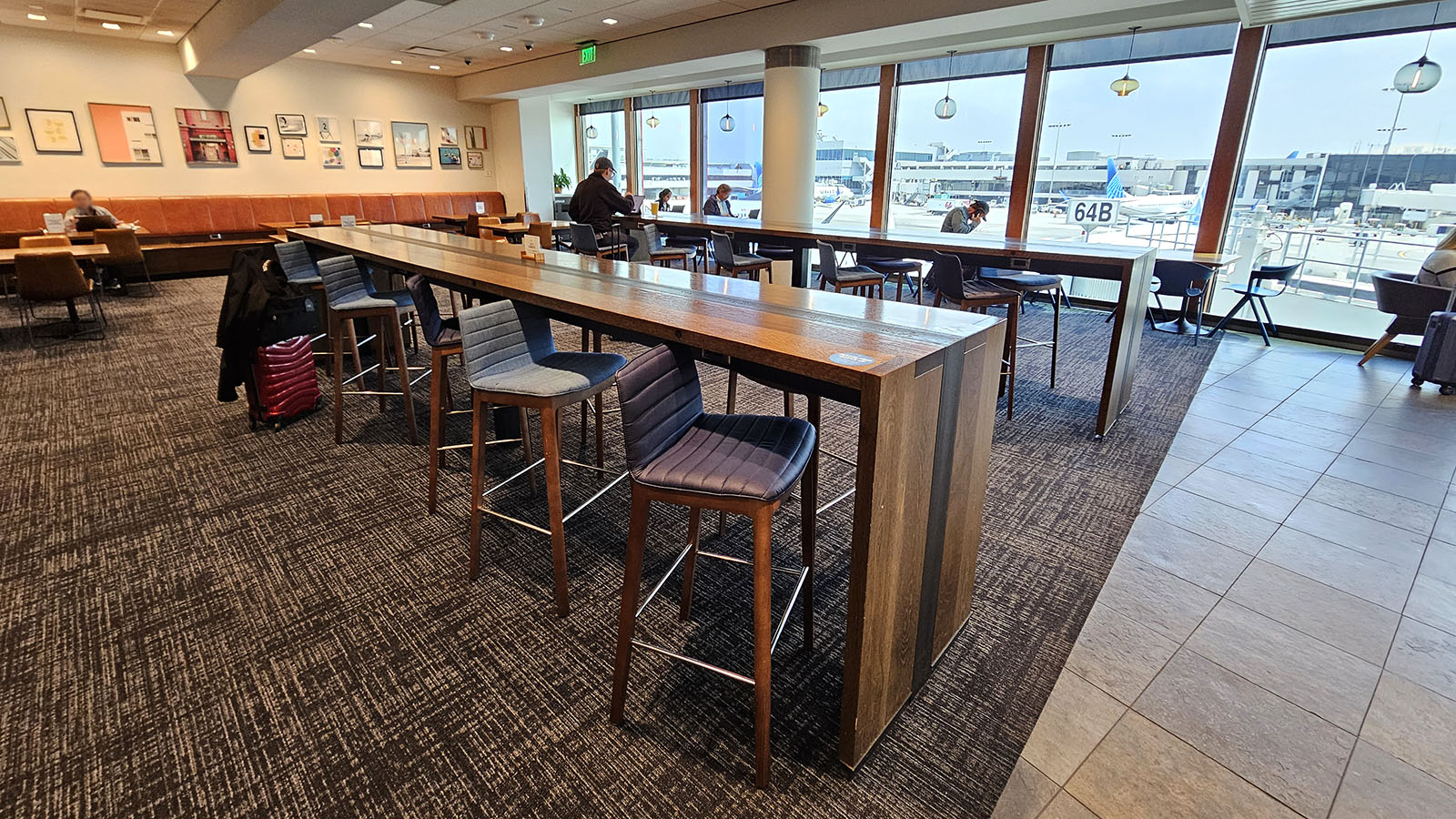

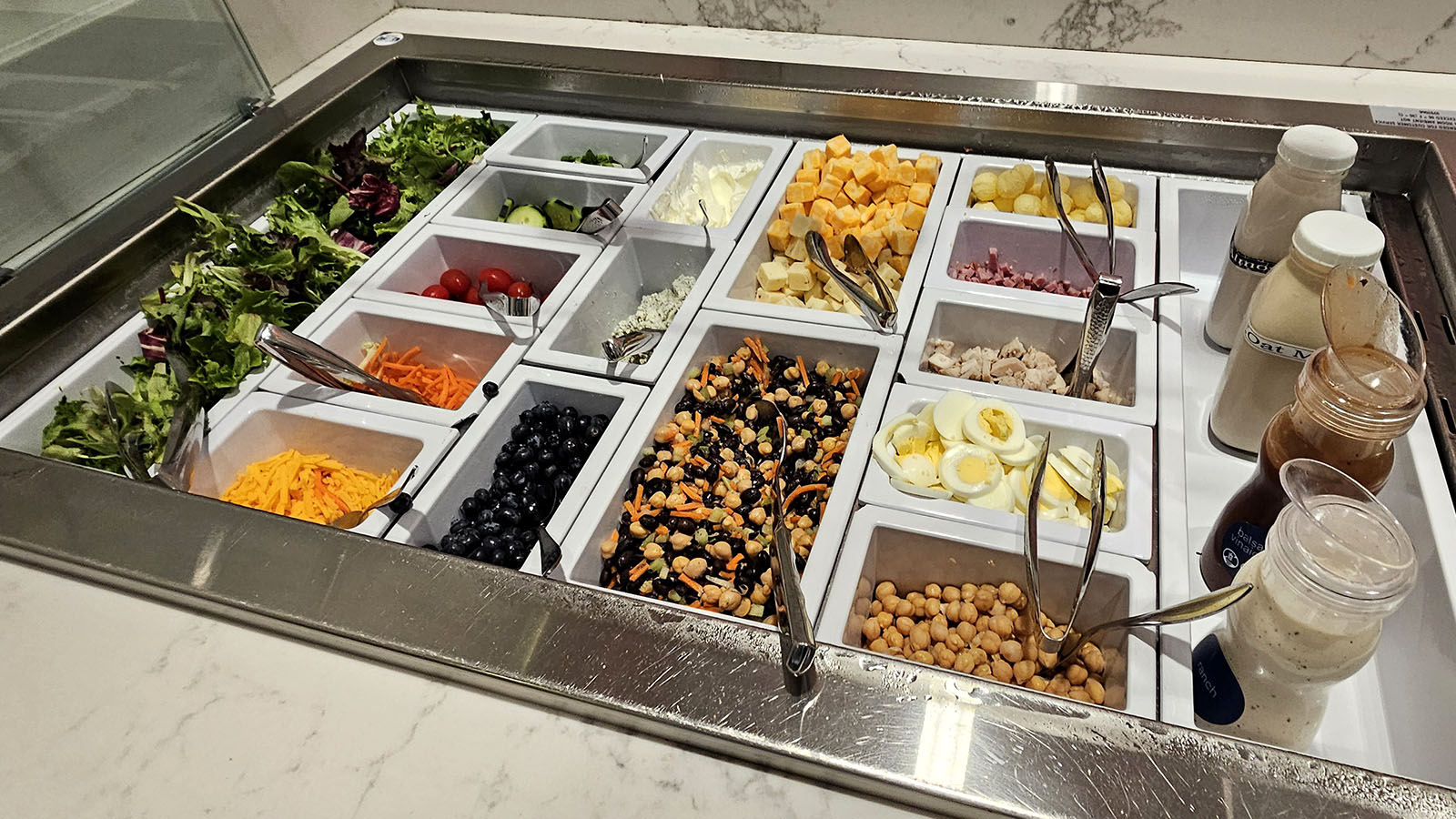
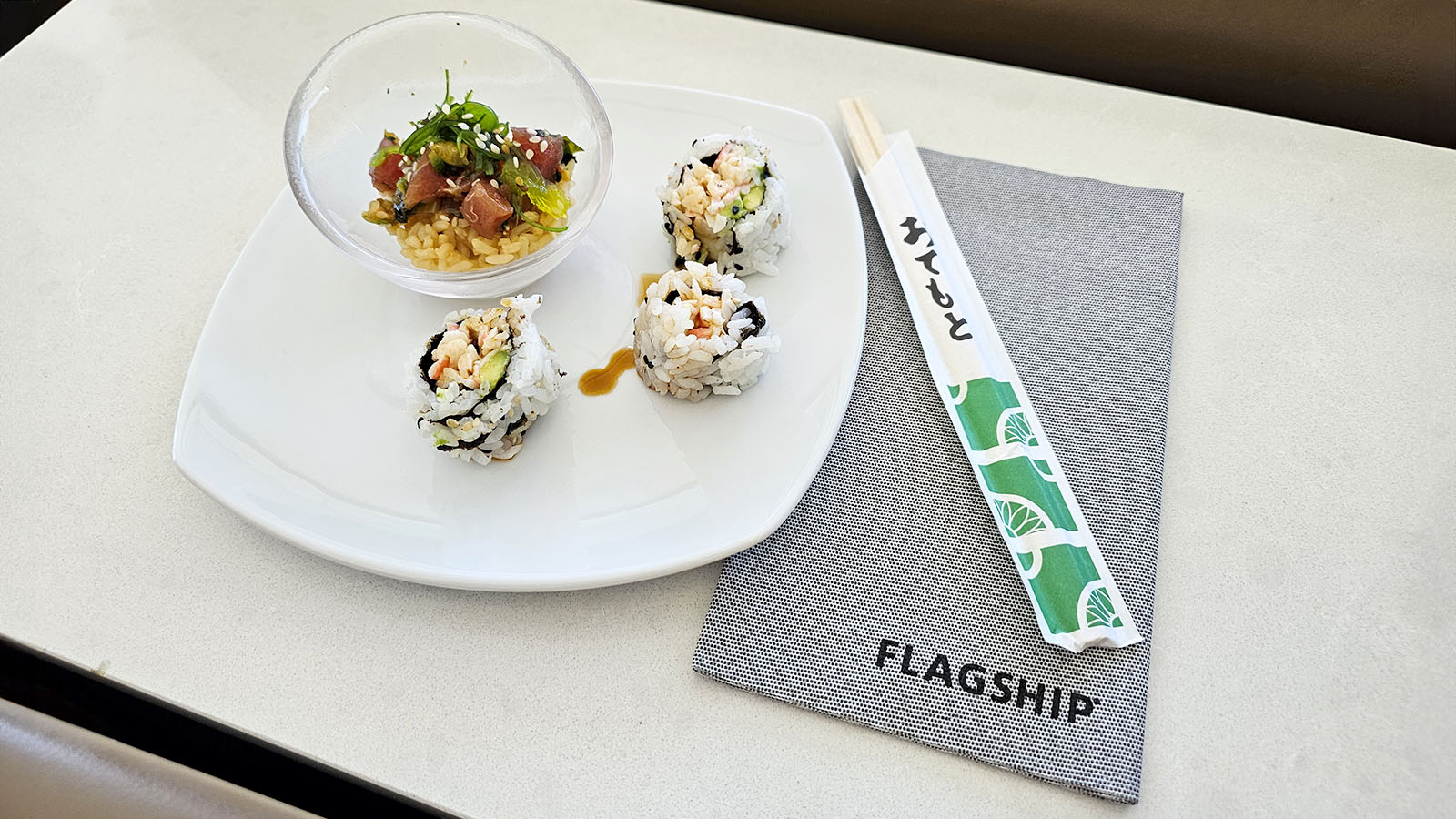
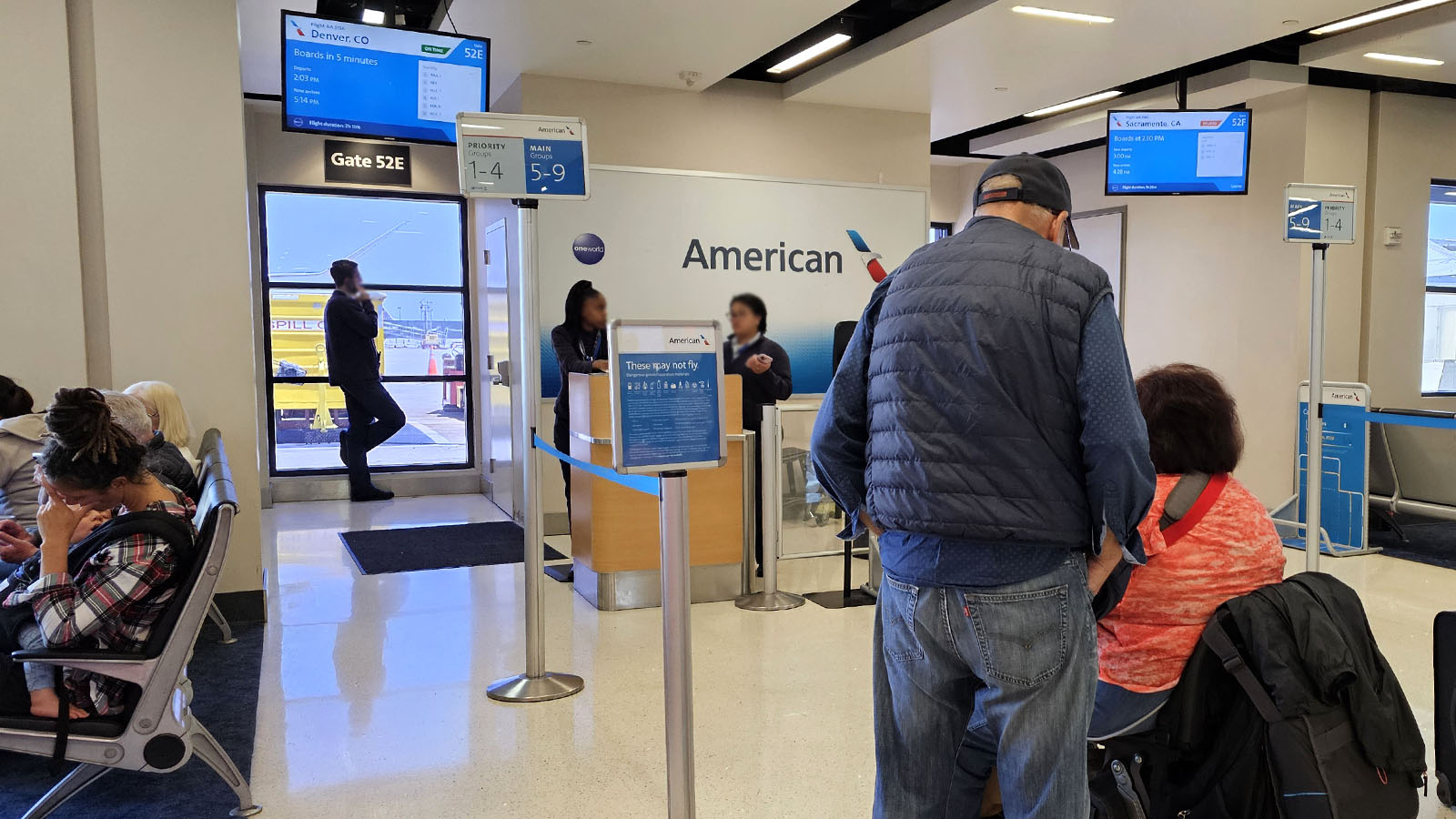
Again, just to remind, a First Class ticket on this American Airlines flight doesn’t include lounge access by way of the cabin class. Instead, savvy travellers who know the rules – and who have the right status or other eligible card – can benefit by putting their travel strategy into play.
Skipping forward to the gate, all First Class passengers can board with zone one, which is before most frequent flyers. Easy.
First Class seating on the American Airlines Embraer E175
You already know not to expect an international-grade First Class suite on these flights. But the cabin does have a nifty feature that’s quite pleasing. The Embraer E175 is quite a small aircraft. So even though these are mere reclining seats, the cabin comes in a 1-2 layout. Yes, that means the ‘A’ seat is a throne with no seatmate. Naturally, I plan ahead and select 1A.
The bulkhead provides the greatest sense of space. There’s a small hassle because bags can’t be by your feet during take-off and landing, which means getting my laptop and headphones out before settling in. But the seat pocket holds the device perfectly (Microsoft Surface Pro 8). Because there’s nobody in the aisle, getting up and down isn’t a bother.
Overall, I really appreciate the legroom, but I find the elbow room the most beneficial. My time on this flight is blocked out for working, so being able to type on a keyboard naturally is fantastic. In Economy, my arms would be at a narrower angle, and it just wouldn’t be as comfortable.
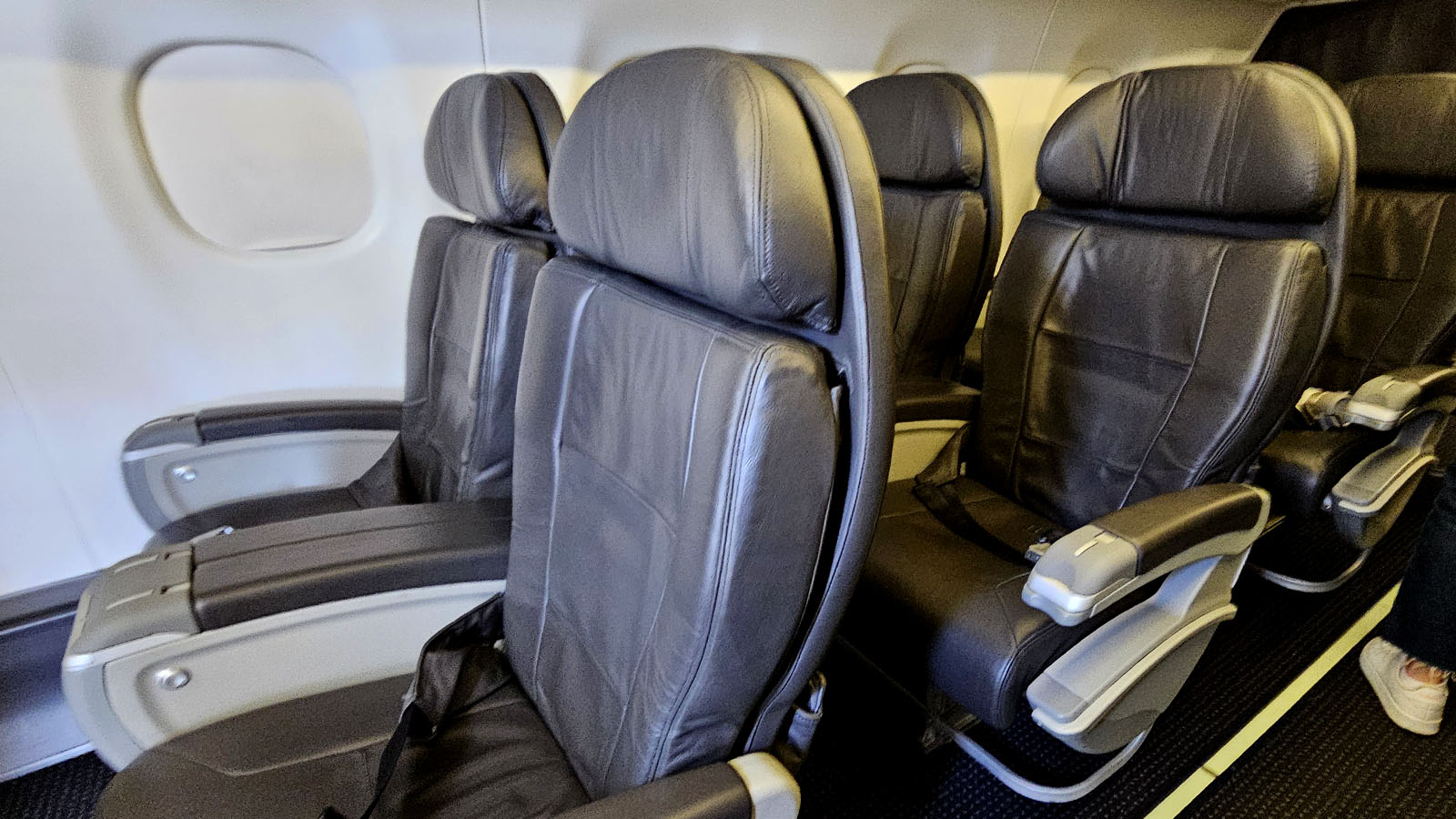
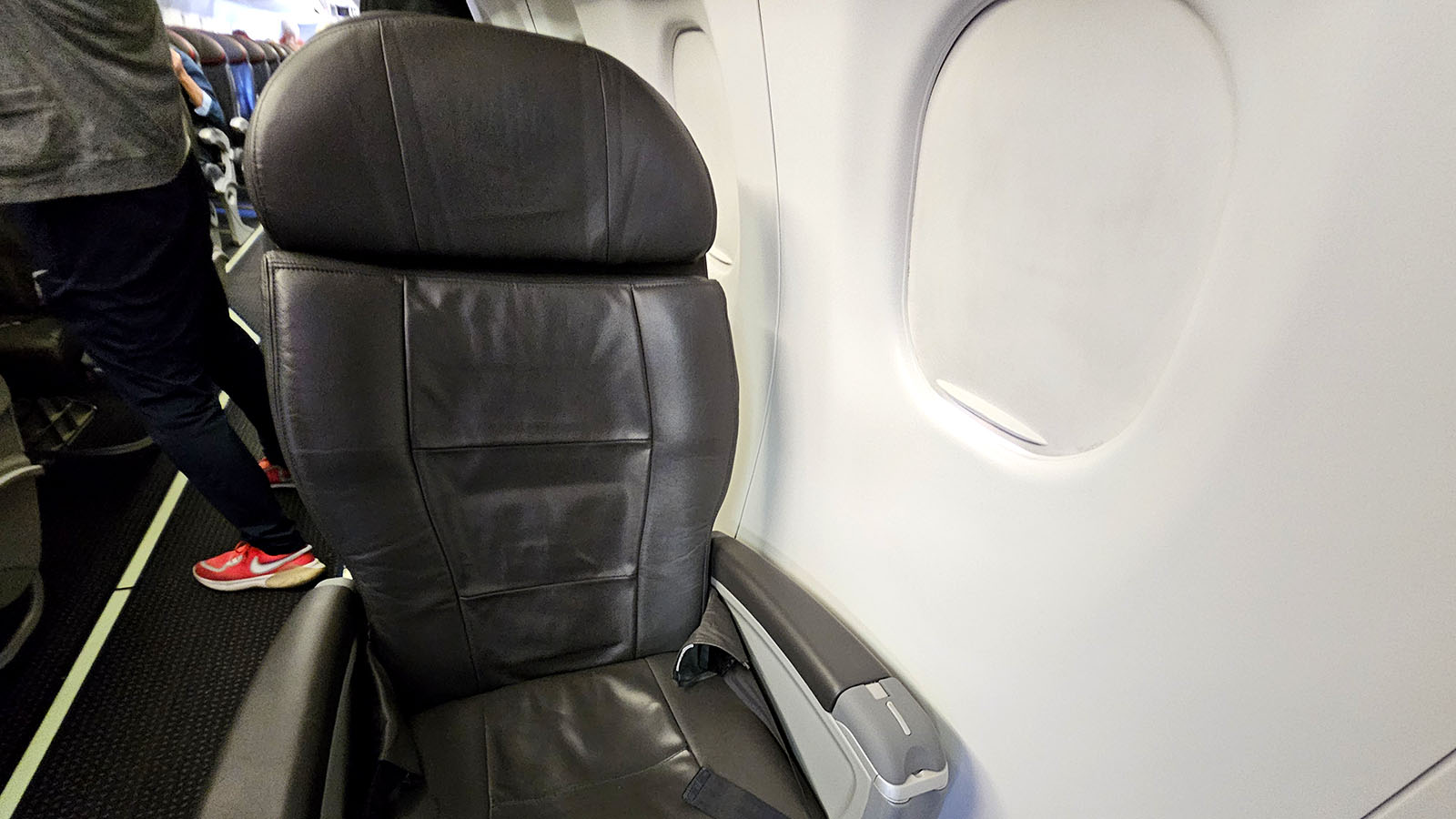
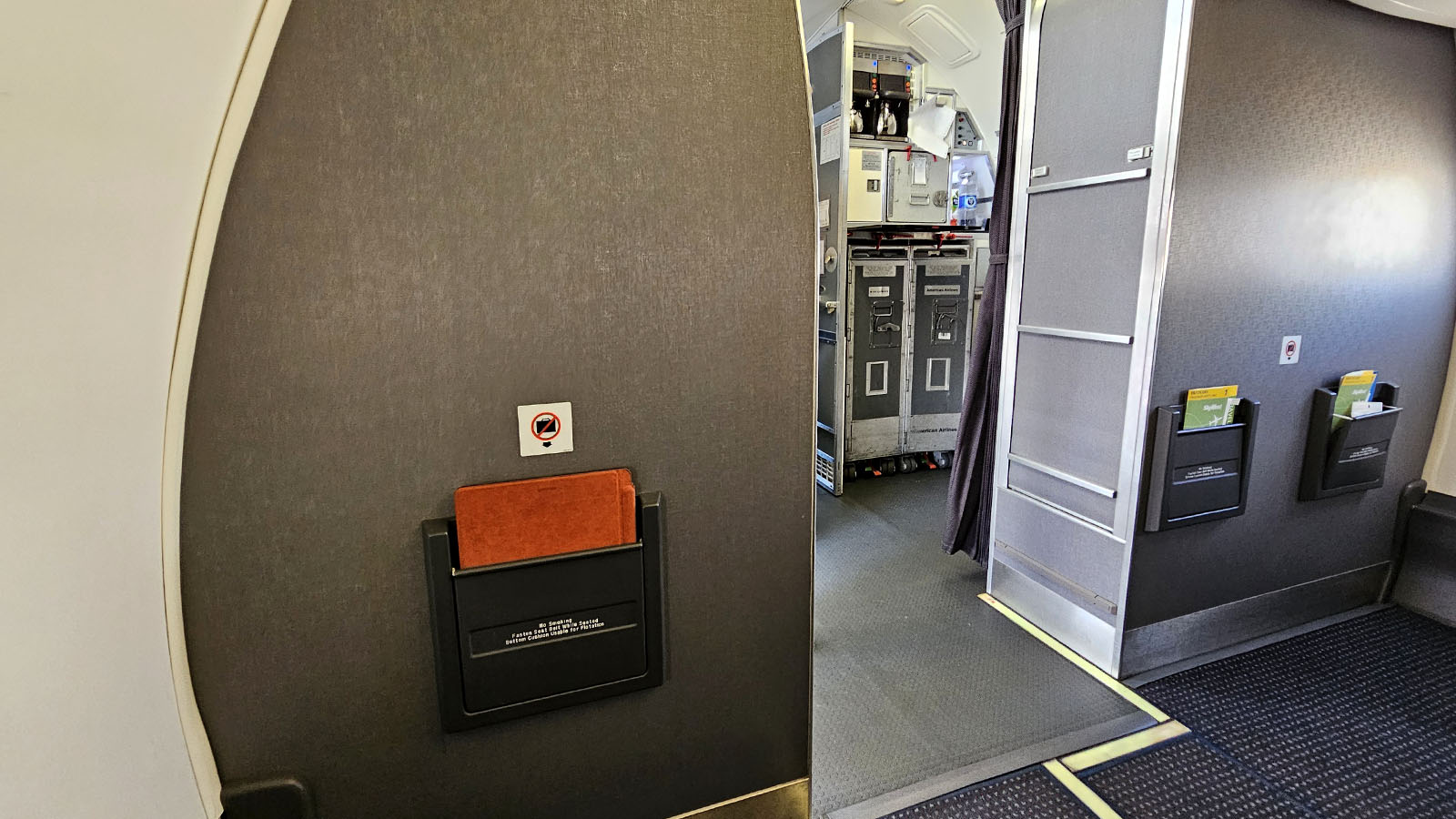
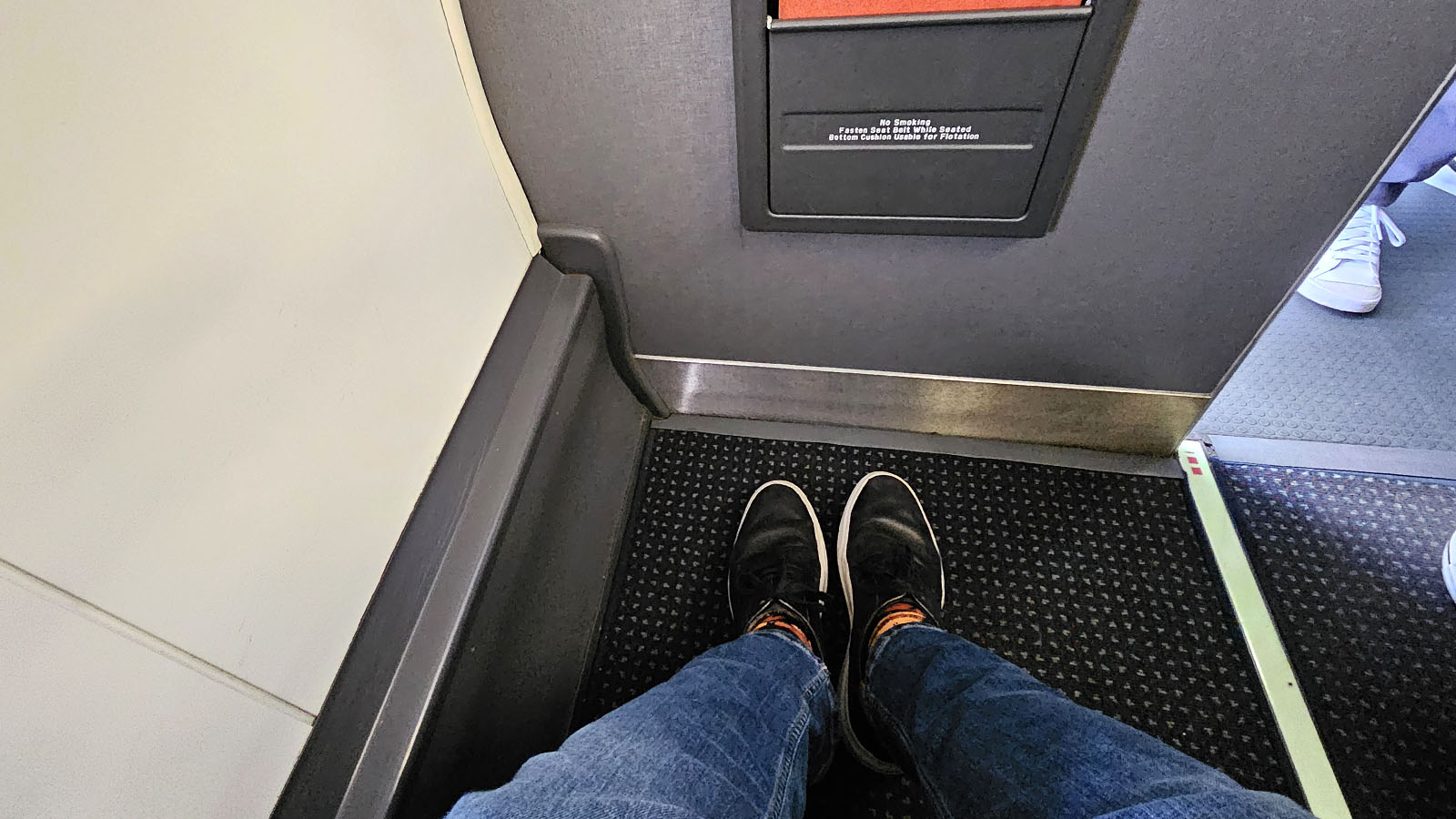
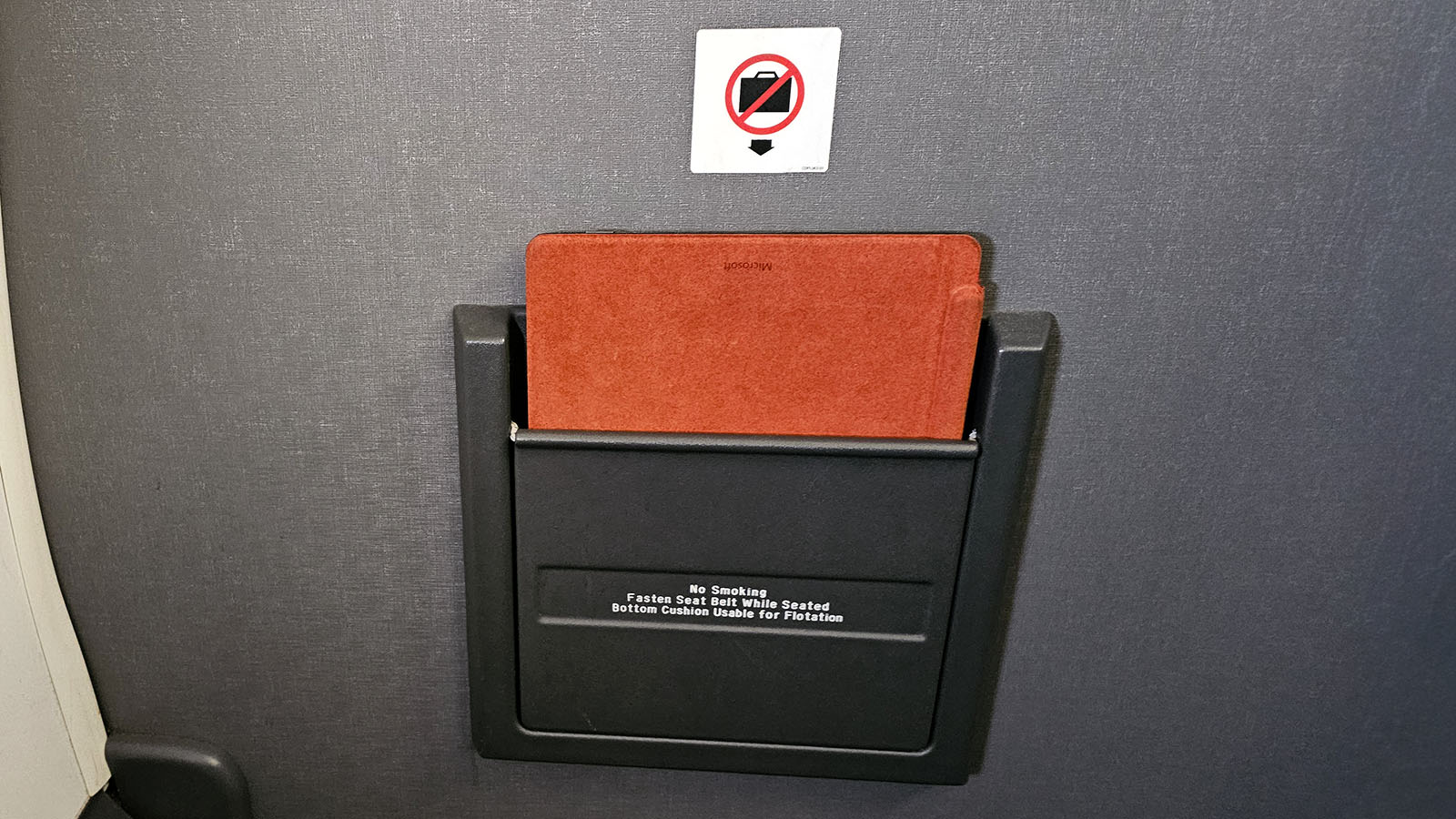
Overhead space is a little limited for baggage. Bags with wheels either need to be turned side-on above the ‘A’ seats or wheels-back above opposite pairs. But I board with both a laptop bag and a rollaboard and get both into the lockers. That’s another implied perk of group one boarding from flying First Class: you can expect not to get your bag ‘gate checked’. It’s a real timesaver if you’re only flying with cabin baggage.
Is it worth flying First Class just for the seat? That depends – and it’s worth remembering that American Airlines upgrades many of its elite travellers into First Class where seats are available. When I need a flying office like today, the space makes it much easier to tackle the tasks on my to-do list.
Food and beverage in American Airlines Embraer E175 First Class
I continue this review by reminding that on domestic flights, American Airlines First Class is not to be confused with, well… what you probably think of ‘First Class’. Today’s hop from LA to Denver is two hours and 17 minutes as scheduled, but there’s no meal.
Instead, cups of chilled water are provided during boarding. It’s quite a hot day here in California, so it’s quite a welcome start. In the air, there’s bar service and a range of complimentary snacks, but there’s no meal. There also weren’t any substantial bites to buy from the onboard menu.
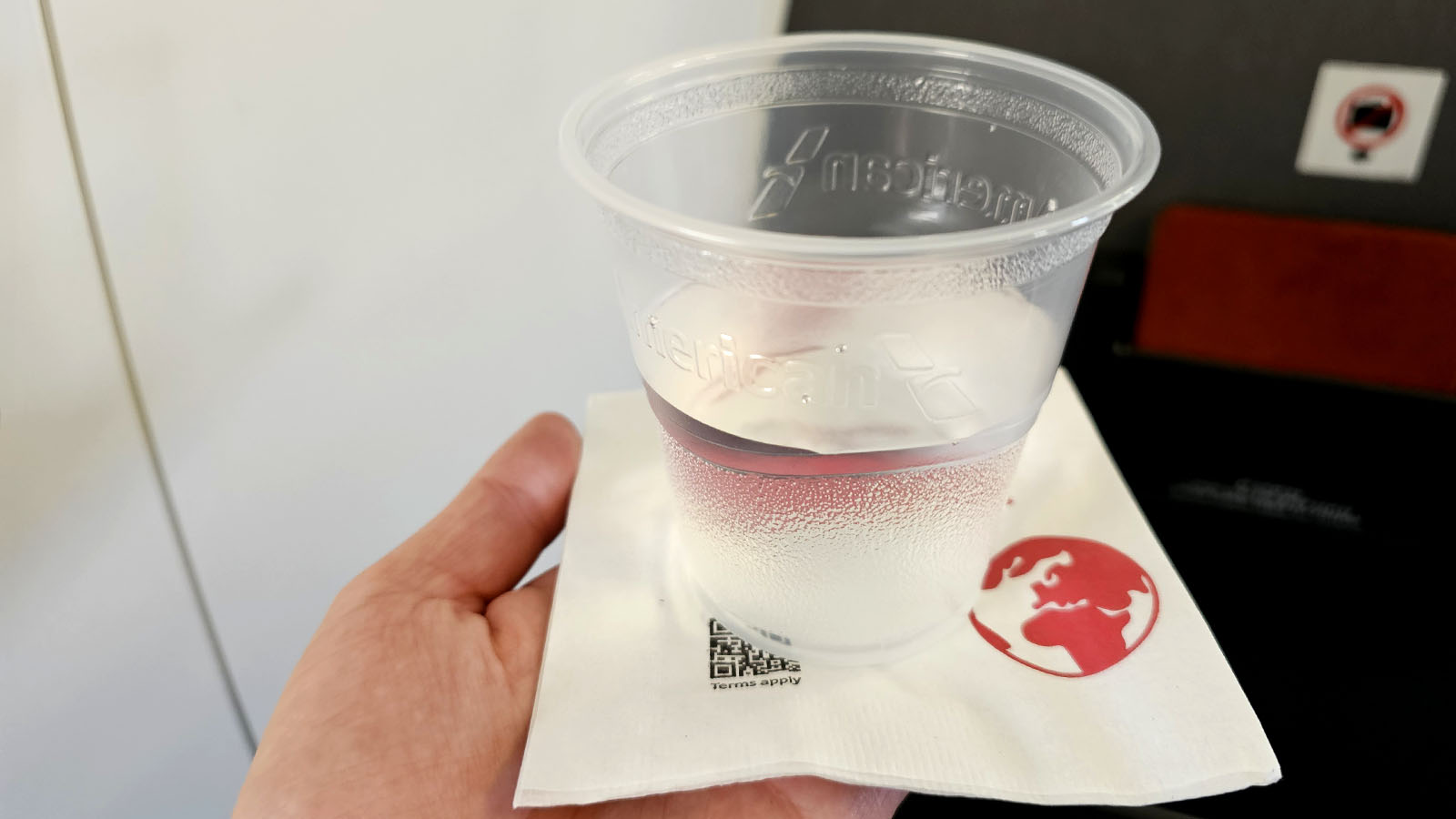

I expected this and planned ahead by enjoying lunch in the lounge. But if you’re flying American Airlines First Class and are relying on the ticket alone, make time for the food court before the journey!
Service and entertainment in First Class on the American Airlines Embraer E175
The staff on this American Airlines First Class flight are pleasant and professional. While there isn’t much for them to serve, they do so with a smile. When my gin and tonic starts to get low, they proactively offer to mix another. The snack basket also comes back around, so there’s at least something to nibble on if you’re peckish.
Otherwise, travellers are largely left to their own devices. Speaking of which, inflight Wi-Fi is available, albeit for purchase. With a block time of just over two hours, I usually find one-hour passes the best value on trips like this. By the time you’ve taxied, taken off and enjoyed a refreshment, that’s about the amount of time you have left.
I connect for US$13 (~AU$19.50) and find the speeds very reasonable and perfectly usable. If I weren’t working on today’s flight, I could use complimentary streaming entertainment via the AA portal. There’s no charge for that or to access flight progress information on your device. If I may suggest, definitely opt for the window seat on this route and hope for a clear day.
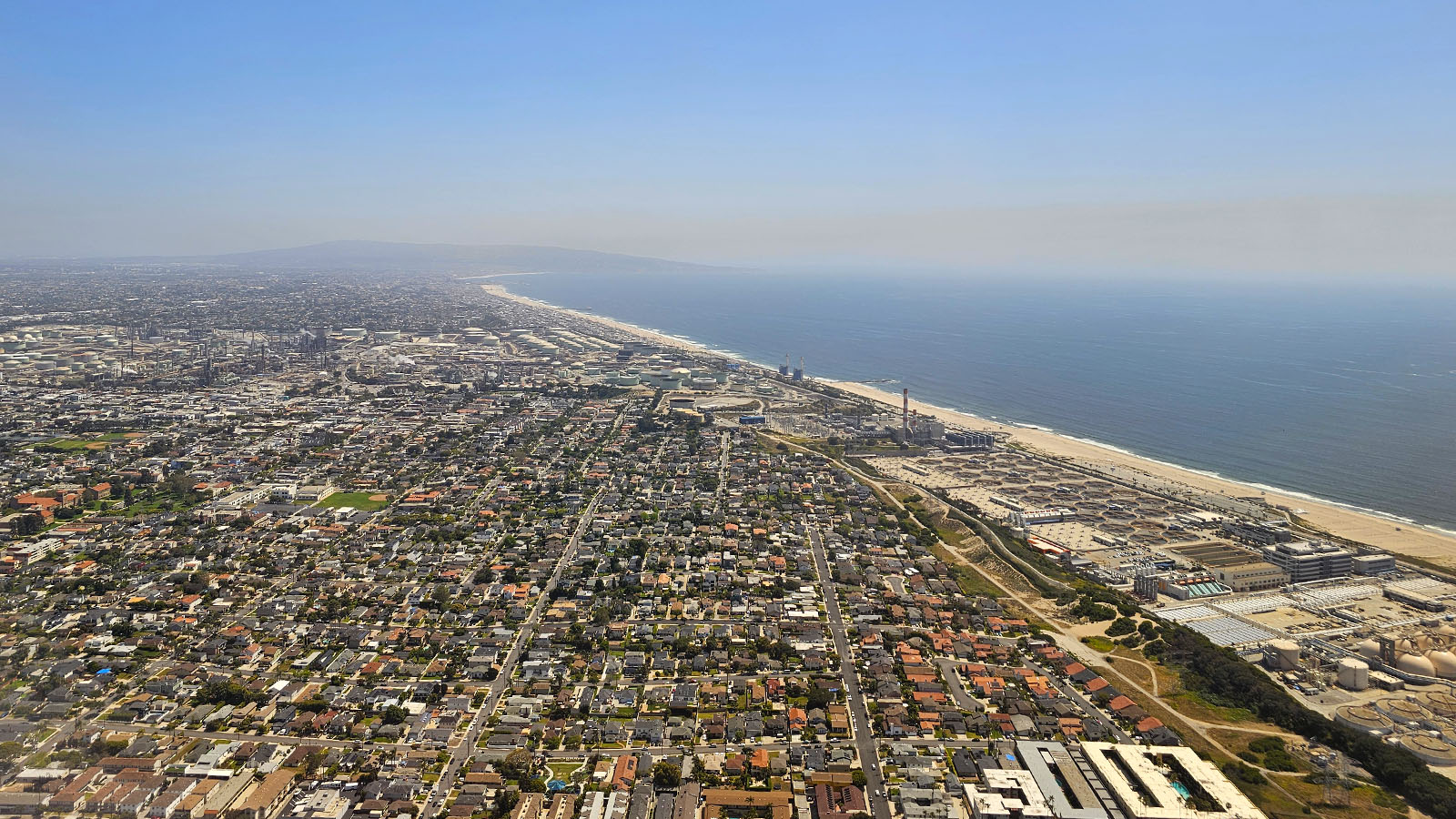
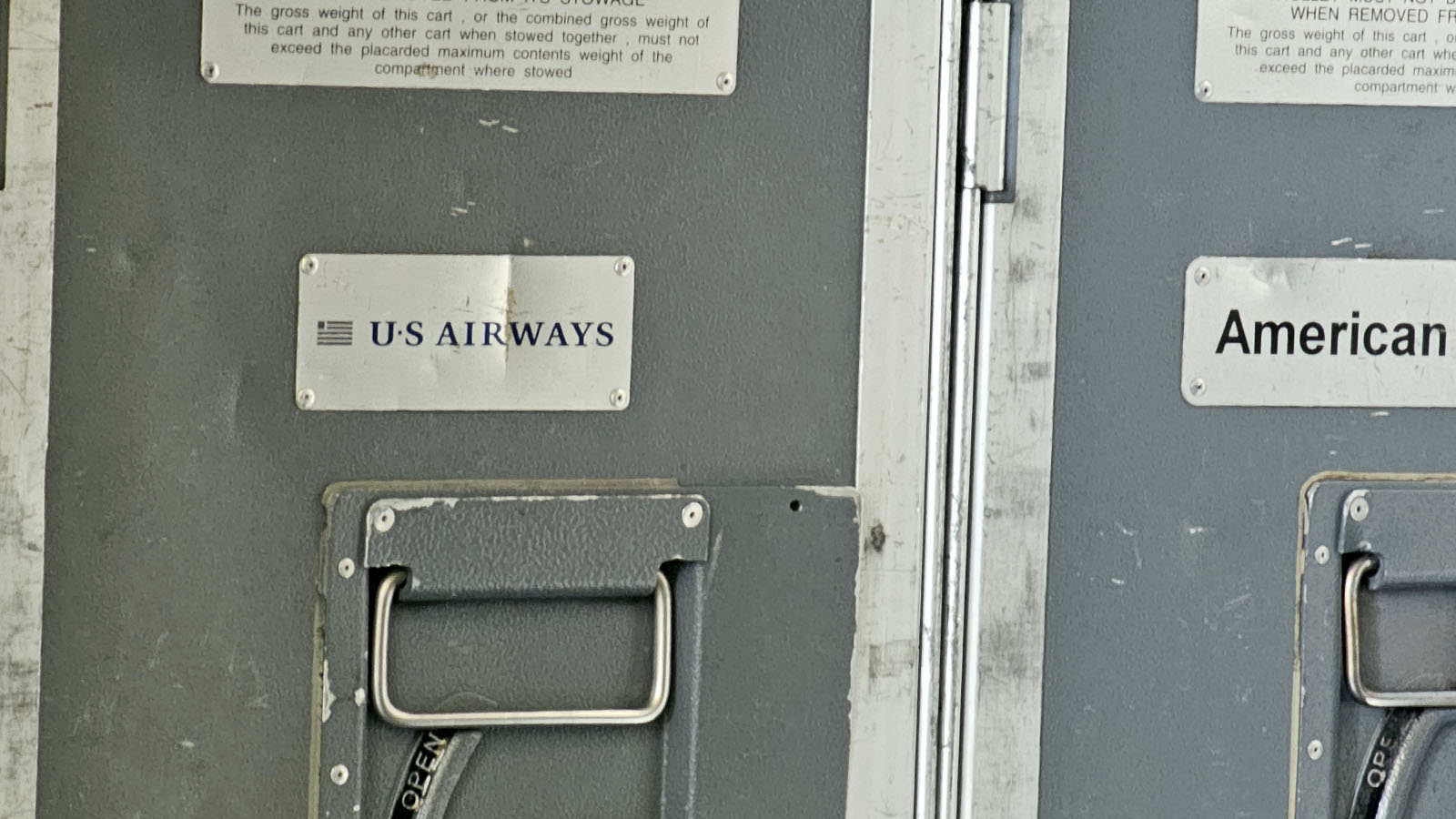
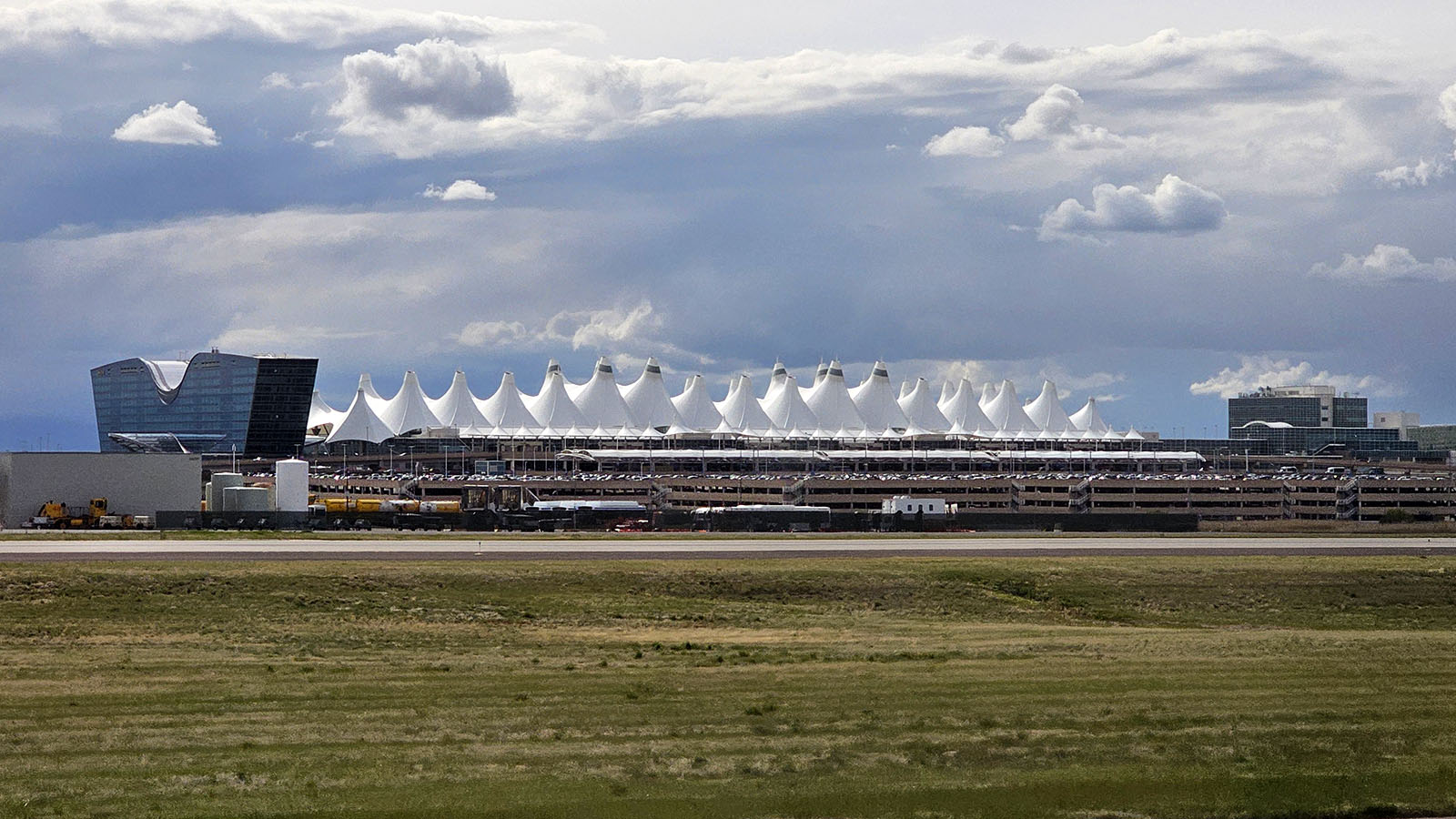
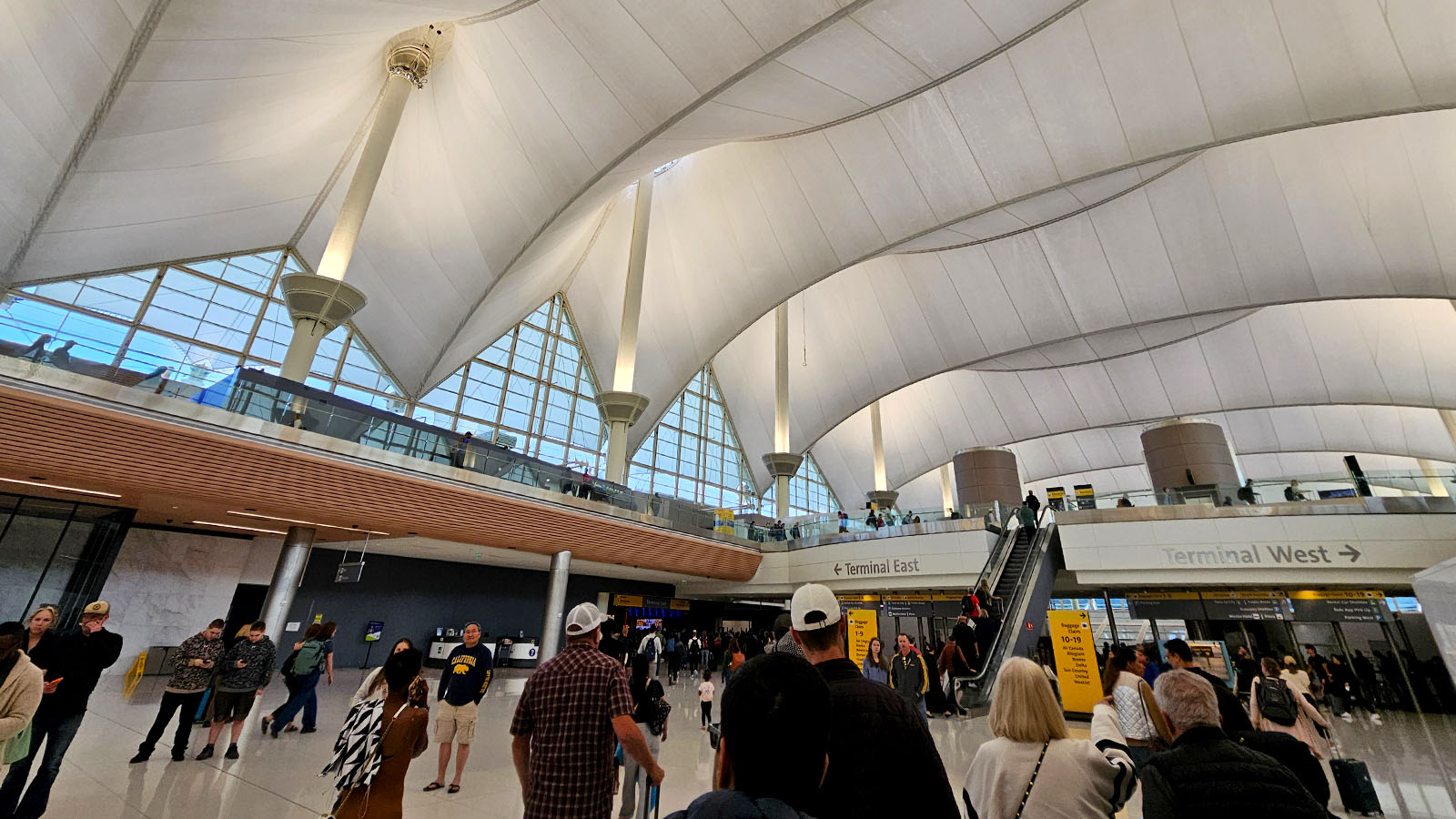
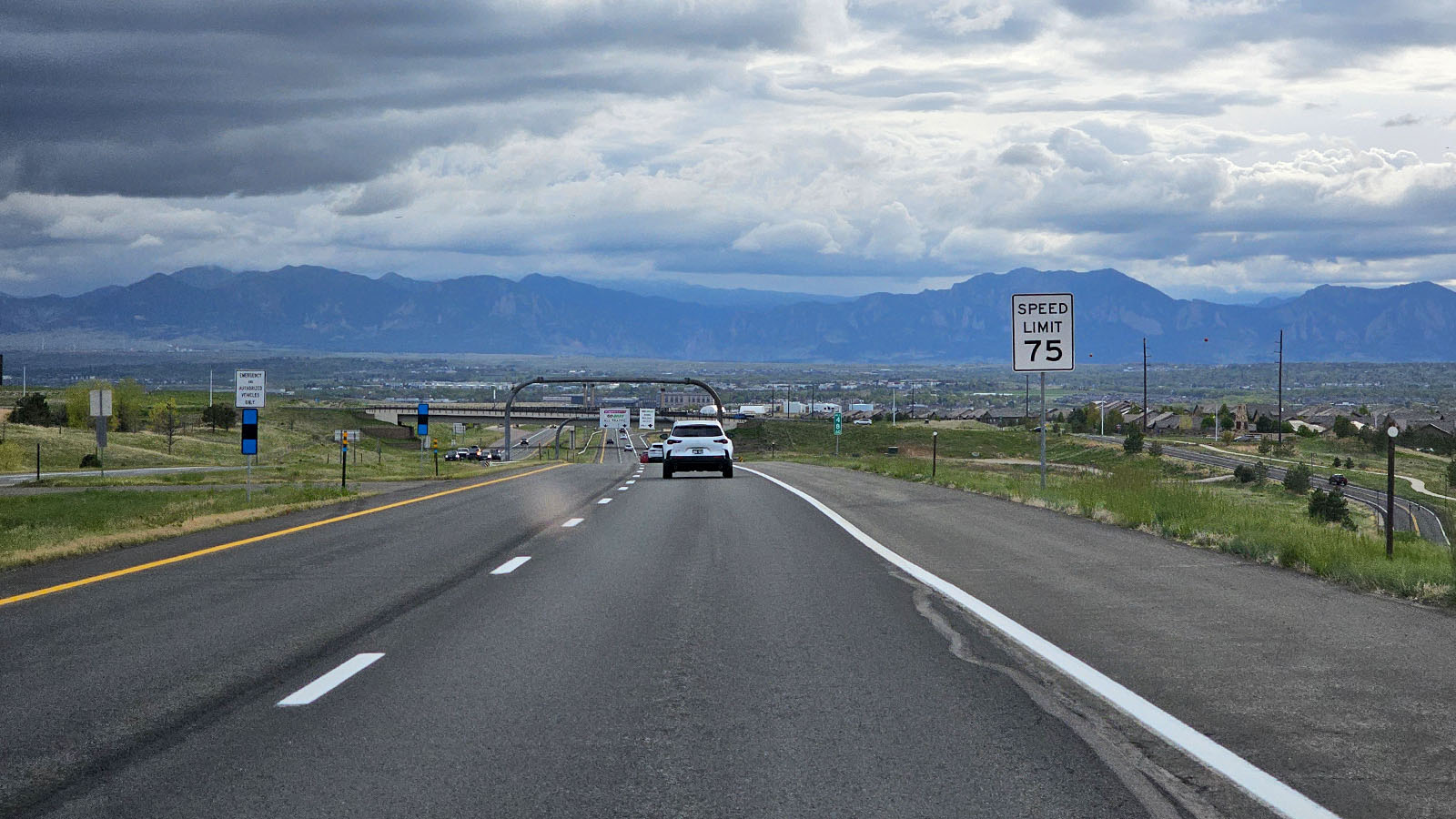
Finishing out the journey, my priority-tagged bag arrives promptly and I’m on my way, ready to explore Colorado.
The verdict
So, about American Airlines domestic First Class… Was this the most lavish flight I’ve ever taken? Not even close. Was it one of the best? Eh, it was decent. Another angle – was I well fed? Well, I had a snack. But did I still feel like I was winning? Actually, yes, and here’s why.
For starters, I booked this flight using Qantas Points. Rather than paying a good chunk of change for the ticket, I paid only US$5.60, which is all that’s needed to cover the taxes and fees on a US domestic hop. I’m also happy that American Airlines sits on the same Qantas Frequent Flyer reward table as Qantas itself. Thus, the number of points for an AA flight like this is no greater than for Qantas.
But that’s not all. Say what you will about the overall offering, but this is still technically a ‘First Class’ flight. Yet, in recognising that the experience aligns better with Business Class, Qantas only charges the Business Class rate when booking this with points. Instead of the usual First Class cost of 41,500 Qantas Points for a flight of this length, the booking is priced akin to Business Class at 27,600 Qantas Points (plus US$5.60).
Then, by booking this trip in First Class, checked baggage is free as standard, and it is for everybody, not only for those with status. In fact, it includes two bags for free. In Economy, AA normally charges US$40 for the first bag (US$35 if you pay during online check-in) and US$45 for the second bag. And that’s with a 50lbs (23kg) limit per bag. With a First Class ticket, the weight limit is 70lbs (32kg) as standard.
Better yet, my oneworld Emerald status allows me to pack 3x32kg bags (which is also true of AA Economy). And because my status comes from outside the US, using the lounge before a US domestic hop is no issue.
All this for just US$5.60, plus some Qantas Points I had kicking around. Say what you will about the lack of inflight food or the quirky lounge policies for those without status. But for me, I get to travel from Los Angeles to Denver (and back), with bags, for the equivalent hit to the hip pocket as a few cups of coffee back home home. It’s a win.
Also read: How to avoid checked baggage fees on US domestic flights
All photography by Chris Chamberlin, who travelled at his own expense.
Stay up to date with the latest news, reviews and guides by subscribing to Point Hacks’ email newsletter.

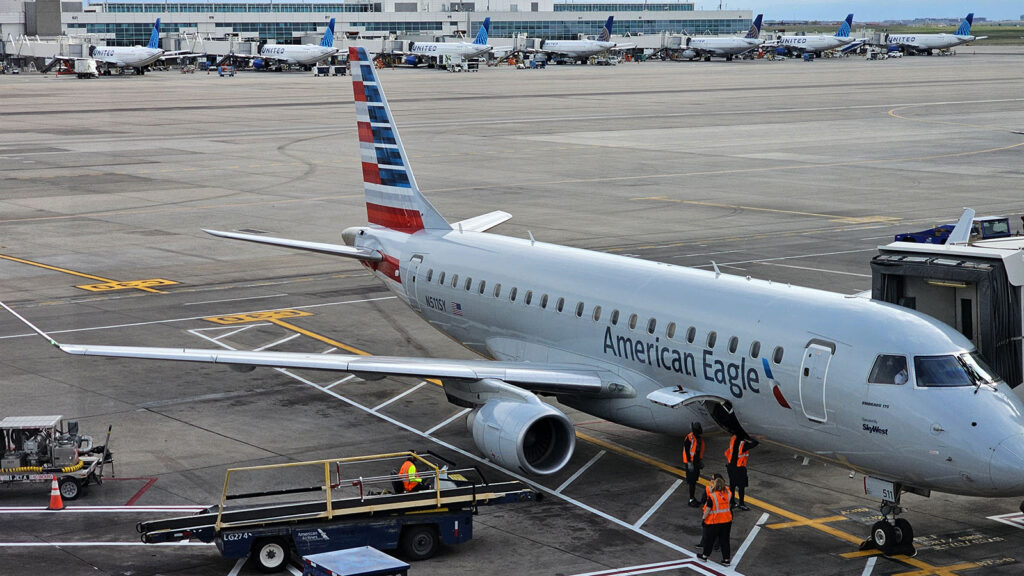

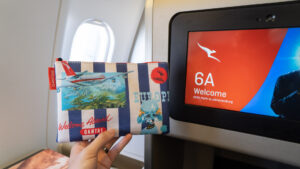

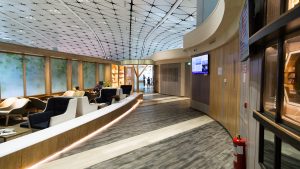

Community